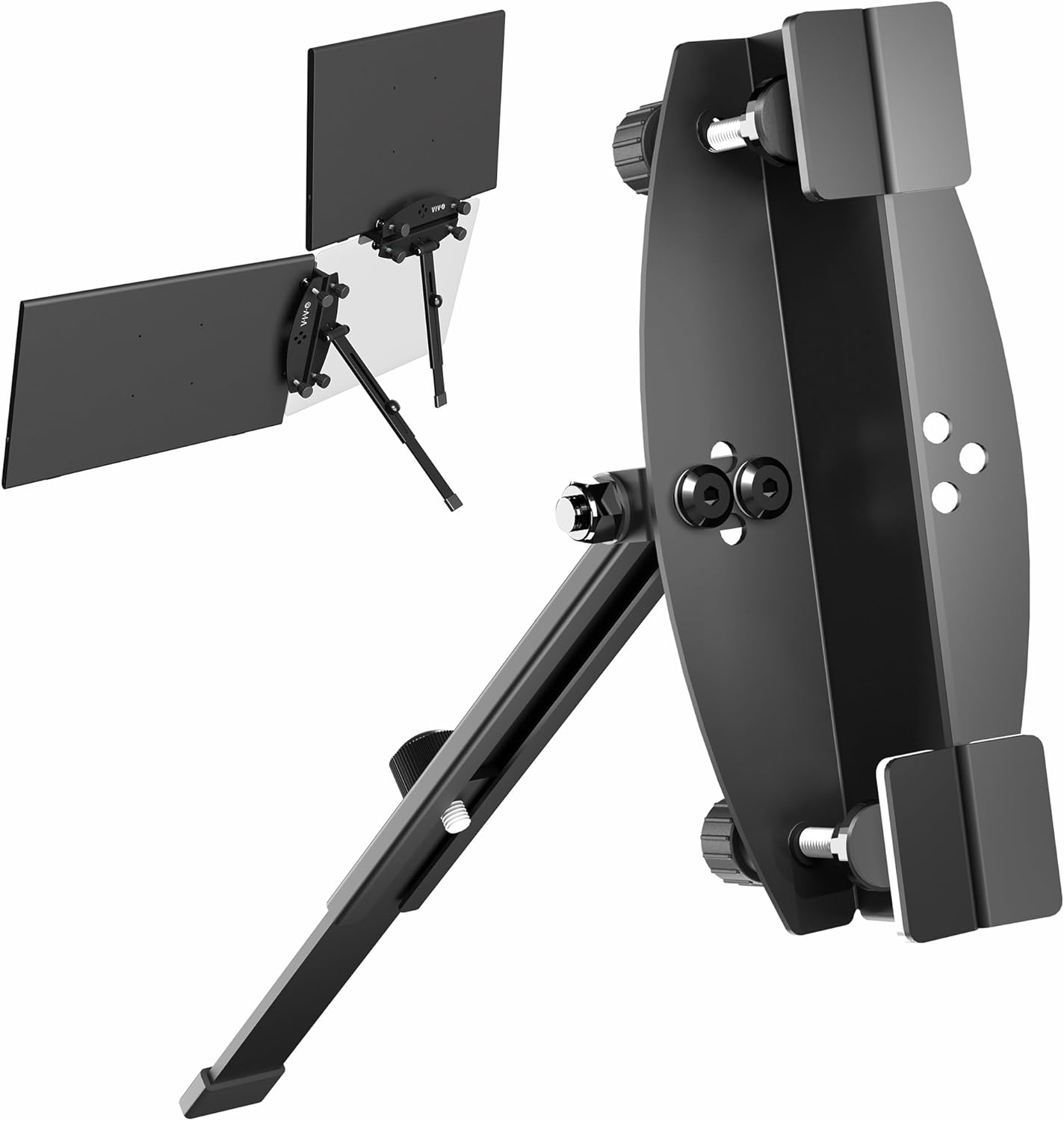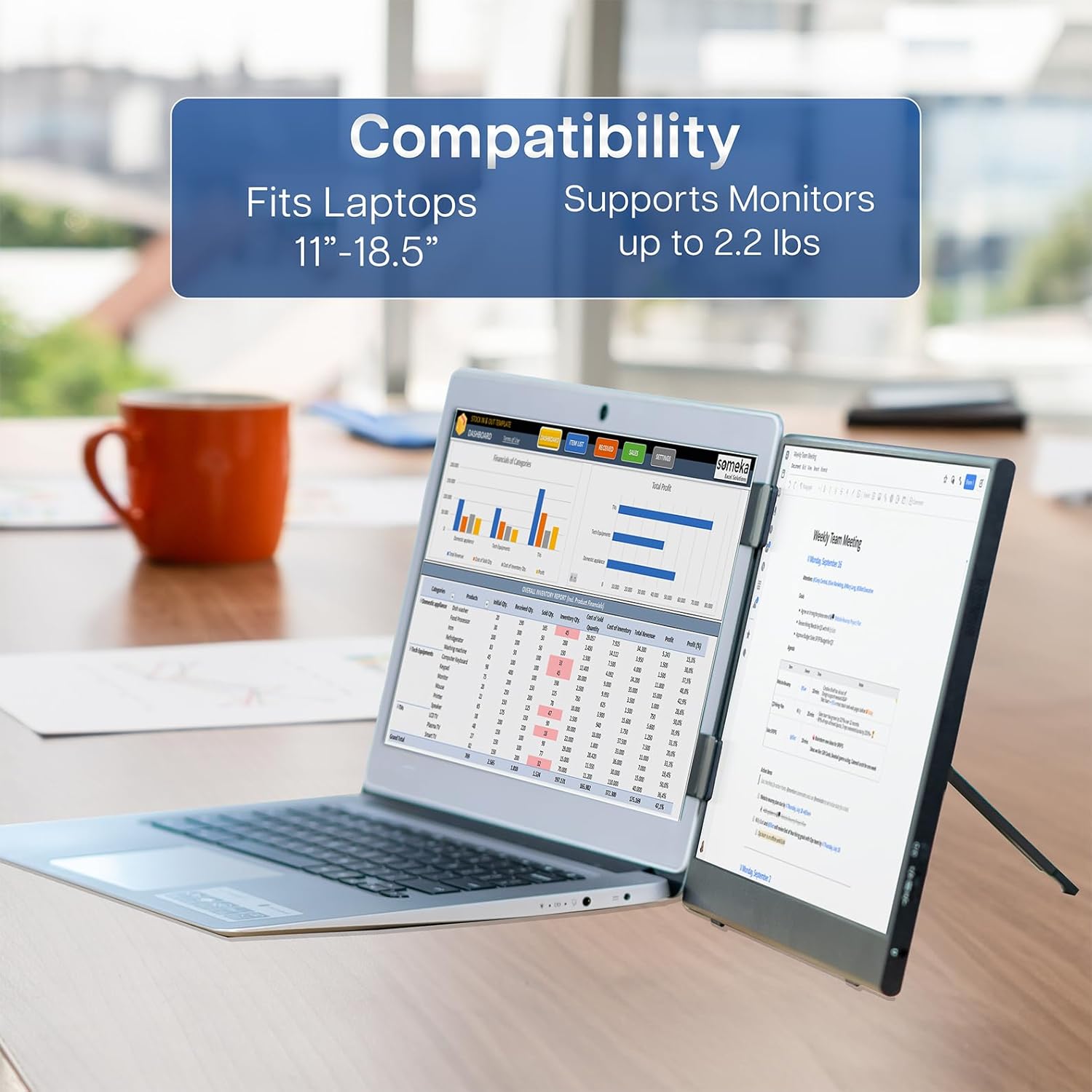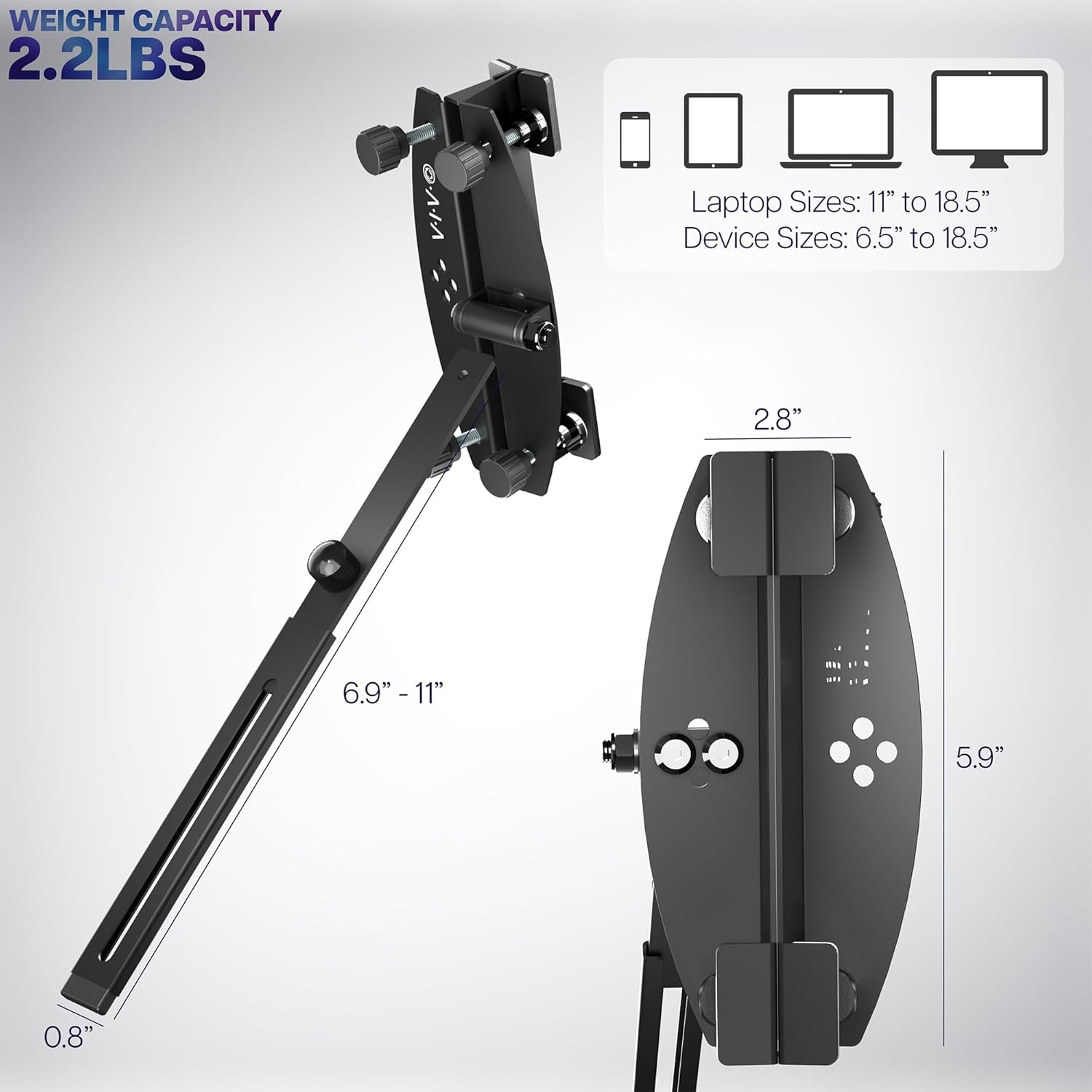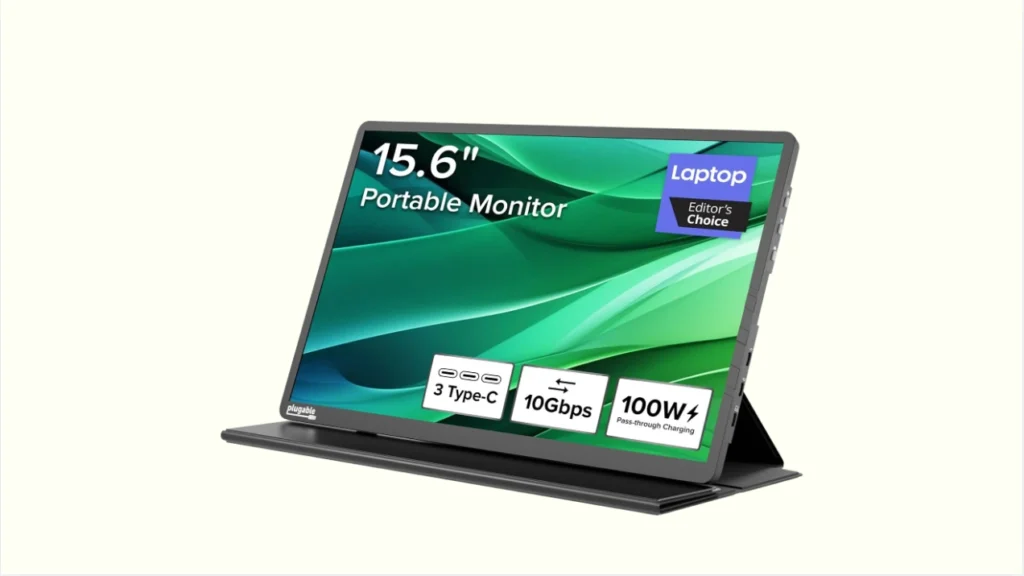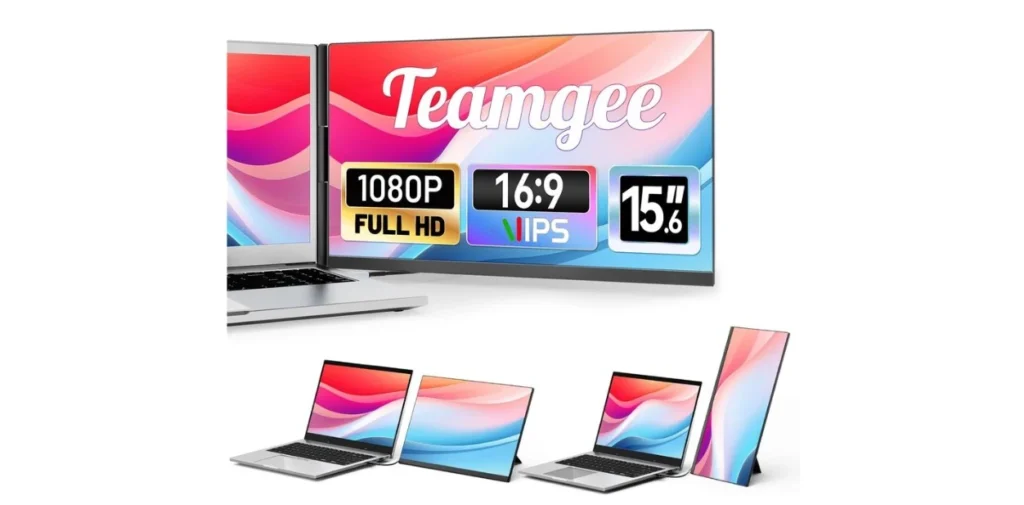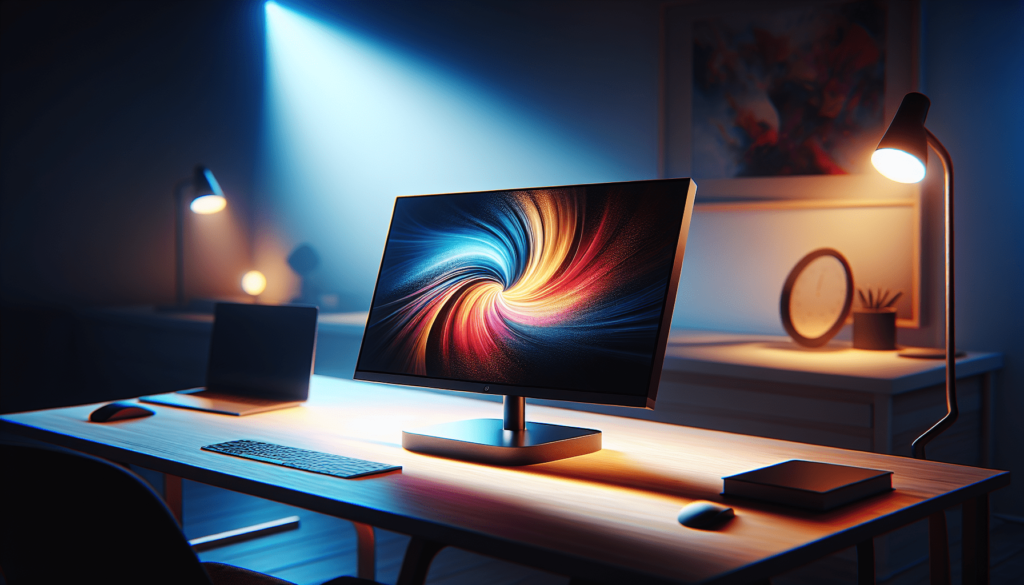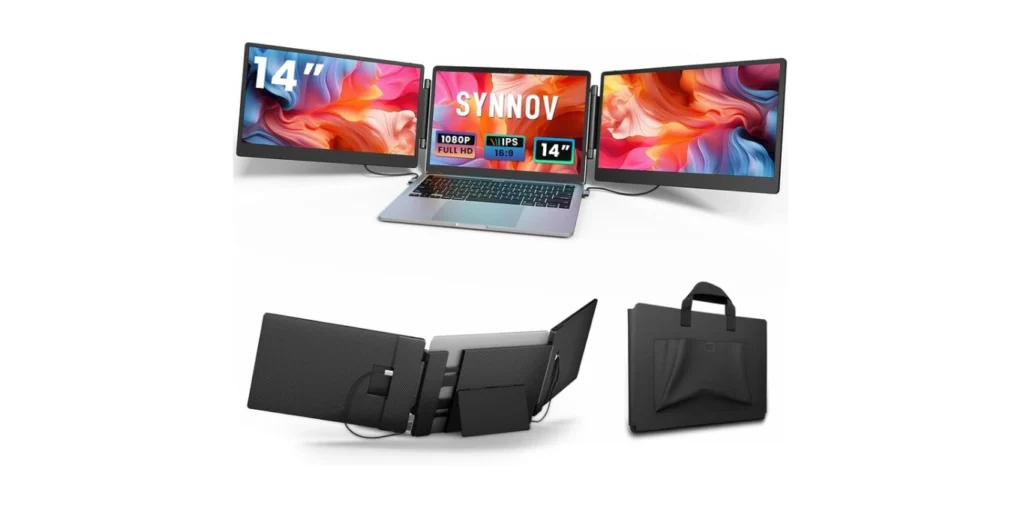Have we ever tried to juggle two windows on a single laptop screen and felt like we were auditioning for a very unglamorous circus?
What the VIVO Portable Monitor Holder Actually Does for Us
We spend so much of our day navigating between tabs that our fingers develop their own choreography. The VIVO Portable Monitor Holder for Laptop Screen Extender, STAND-PM01A, is a compact little apparatus that lets us attach a portable monitor (or a larger smartphone) to our laptop. It’s not a monitor itself; it’s the skeleton, the infrastructure, the reliable stagehand who never takes a bow but makes the show possible.
By securing a secondary screen that sits on top of, or to the right or left of our laptop, we get the luxury of a dual-screen setup without lugging around a full desk’s worth of equipment. It fits laptops between 11 and 18.5 inches and devices from 6.5 to 18.5 inches, giving us flexibility for everything from a sleek 13-inch ultrabook plus phone, to a 16-inch workhorse plus a 15.6-inch portable monitor.
VIVO Portable Monitor Holder for Laptop Screen Extender, Fits Laptops up to 18.5 inches, Black, STAND-PM01A
$24.99 In Stock
Who This Holder Is For (And Why We Might Be One of Those People)
Some of us like to keep our inbox open while we work in a document. Some of us prefer a Spotify queue on one side and a sprawling spreadsheet on the other. And some of us simply want to look busier than we feel in a coffee shop. This holder is for anyone who wants more screen space wherever we set down our laptop—home, office, coworking space, train table, or the sort of kitchen counter that collects both cables and crumbs.
It’s especially appealing if we already own, or plan to own, a portable monitor. If we don’t, larger smartphones can sometimes pinch-hit as a second screen when paired with the right software. The holder doesn’t play favorites: it just keeps the second screen where we want it, and makes sure gravity doesn’t have the last word.
Key Features at a Glance
The simplest way to think about this product is that it solves a geometry problem. Our laptop has a screen. Our portable monitor has a screen. This stand gives them a stable relationship, with adjustable angles, a support leg, and reassuring thumbscrews.
- Fits laptops from 11 to 18.5 inches
- Holds devices from 6.5 to 18.5 inches
- Configurable: top, left, or right mount
- Thumbscrews to tighten and secure our setup
- Telescoping support leg for stability and balance
- Folding design for easy portability
- Straightforward assembly with included hardware
- Color: Black
- Portable monitor not included (we bring our own)
Why That Matters in Daily Life
Our day is a battlefield of tiny frustrations. Searching for the window we just used and can’t find occupies a shocking portion of it. Doubling our screen real estate reduces the back-and-forth and lets us keep context visible. This holder gives us that capability in a way that can live in our bag and assemble in minutes, which is exactly the speed our attention span prefers.
A Friendly Breakdown: Features and Benefits
We like knowing what we’re getting into. Here’s a short table that connects the specs with real-world value.
| Feature | What It Means | Why We Care |
|---|---|---|
| Laptop compatibility: 11”–18.5” | Works with most laptops we actually use | We don’t have to baby an extra, special device—this fits our current machine |
| Device size range: 6.5”–18.5” | Supports phones and portable monitors | We can use what we already have or upgrade later |
| Top/Left/Right mounting | Flexible arrangement | We tailor the setup to our handedness, space, and mood |
| Thumbscrews | Tool-free tightening | Adjustments don’t require pliers or prayer |
| Telescoping support leg | Stability under load | The laptop hinge doesn’t suffer for our ambition |
| Folding design | Compact, travel-friendly | It gets out of the way when we’re on the move |
| Simple assembly | Few parts, clear purpose | We spend minutes, not hours, setting it up |
| Matte black finish | Subtle, professional | It blends in rather than showing off |
How We Assemble It Without Summoning a Curse
Assembly is mercifully human. We attach the monitor holder to the support leg using the included hardware, then fine-tune with the thumbscrews. If we’re prone to over-tightening for sport, we can relax—firm and snug is enough. The telescoping leg extends until the secondary screen is supported comfortably and our laptop doesn’t twitch like a nervous squirrel when we type.
Because there’s no included screen, we provide the portable monitor (or large phone) and whatever cables it requires. The holder’s job is to keep it in place; our job is to connect it to power and video through our laptop’s ports or a hub.
A Routine That Keeps Us Sane
- Decide where we want the second screen: top, left, or right.
- Attach the holder to the support leg using the provided screws.
- Position the holder and slide in the monitor or phone.
- Tighten the thumbscrews until the device doesn’t wobble.
- Extend the telescoping leg until weight is comfortably supported.
- Plug in the secondary screen’s cable(s), take a breath, and enjoy having elbows, metaphorically speaking, in our digital workspace.
Mounting Configurations and When Each One Makes Sense
One of the quiet pleasures here is choosing our layout like a diner selecting a booth. Do we want the extra screen on top of the laptop, or to the left or right? Different tasks, and frankly different moods, benefit from different placements.
Top Mount: The “Stacked” Library Shelf
When we place the second screen above the laptop, it feels like a little command center. We like this for reference material—a document above, active work below—so our eyes can bounce politely between them. A top mount also saves width on narrow desks, though it may obscure a built-in webcam depending on the laptop. We keep that in mind before joining a video call unless we want to be a disembodied voice.
Right-Side Mount: The “Dominant Hand” Helper
If we tend to use a mouse or gesture most with the right hand, having the extra screen on the right keeps our cursor’s commute short. We use this for calendars, chat windows, or a debugger panel. It feels natural if we’re right-handed, and it keeps cables more contained if our ports are on that side.
Left-Side Mount: The “Second Brain”
Left-side mounting has a cozy, bookshelf-on-the-desk vibe. We put reference materials here—PDFs, notes, or even music controls. It’s a peaceful arrangement if we prefer the main action on the laptop and a steady audience of information to the side. If our ports live on the left, this can also reduce cable spaghetti.
Stability Without Fear: The Telescoping Support Leg
The heart of the holder’s confidence is the adjustable support leg. We extend it until the secondary screen is supported without stress on the laptop hinge. The leg is like a quiet chaperone keeping the dance appropriate: close enough to help, not so close as to intrude.
We use the thumbscrews as a final nudge to lock angles. The sweet spot is a tightness that stops movement while still letting us make small adjustments. It’s a bit like seasoning soup—small changes make big differences, and overdoing it can be regrettable.
Portability and What It’s Like to Travel With It
The folding design means the holder becomes a compact, black bundle that fits in a bag. The appeal is that we can take it from home to office to café without feeling like we’re carrying a modern sculpture. If we’ve ever tried corralling a freestanding portable monitor on a small table, we’ll appreciate how this holder turns the laptop into an anchor instead of inviting more tabletop clutter.
We slip it into a sleeve or a pocket in our backpack so it doesn’t share space with crumbly snacks. It’s become one of those items that doesn’t demand attention until the moment we need it. That’s our favorite kind of gear.
Compatibility: What Fits and What Might Not
The VIVO holder secures to laptops ranging from 11 to 18.5 inches, which covers most modern machines. On the device side, it accommodates screens from 6.5 to 18.5 inches. That’s a broad net—larger smartphones and most common portable monitors fall in this range.
If we’re using a particularly heavy or unusually thick portable monitor, we make sure the support leg is properly adjusted, and we keep an eye on balance. The product details aren’t a weight chart; they’re a size chart. We stay within the stated dimensions and let common sense handle the rest.
Quick Examples of What Works
- 13–16 inch laptops paired with 12–15.6 inch portable monitors
- 14 inch laptops with a large smartphone running a second-screen app
- 11–12 inch laptops with a lightweight 13.3 inch portable monitor
If our laptop has a pronounced curved lid or sensitive glass edge, we take extra care in positioning the holder so pressure is distributed gently. We’re not recreating a vise grip; we’re giving our laptop a graceful partner.
Everyday Uses That Actually Make a Difference
We notice the benefits of dual screens when the little annoyances disappear. Instead of re-sizing windows like we’re constantly auditioning drapes, everything has a place.
- Writing and research: Draft on the laptop, sources on the second screen.
- Video calls: Meeting on one, notes or agendas on the other.
- Coding: Editor on one side, terminal or documentation on the other.
- Spreadsheets: Full-screen sheet below, pivot tables or charts above.
- Creative work: Editor window and tool palettes finally have breathing space.
- Social or communication apps: Keep the conversation visible without losing focus.
The biggest shift is mental. We stop feeling like we have to keep a dozen thoughts in our head because our single screen can’t keep up. Our attention settles down, and so do we.
Cable Management and the Small Matter of Wires
Because the holder doesn’t include a monitor, we choose our own cable adventure. Many portable monitors use USB-C for both power and video, or HDMI plus a power source. Either way, cable management becomes part of the ritual.
We route cables so they don’t dangle like ivy. Right-angle adapters can help with ports that face awkward directions. If we tend to move around a lot as we type, a cable clip or a small Velcro tie can keep things neat so we don’t snag wires and cause a micro-heart attack.
Using a Phone as the Second Screen
A delightful quirk is that the holder can secure devices as small as 6.5 inches, which includes a large phone. If we use software that turns a phone into a second display, this can be a lightweight alternative to carrying a portable monitor. It’s not as roomy, but it’s surprisingly helpful for chat, a timer, or reference notes.
We think of it as sticking a little post-it note to our screen, except the note can play videos and remind us of meetings.
Ergonomics: We Still Care About Our Spine
The top-mount configuration can raise our sightline, which is nicer for our neck than peering down all day. The side mounts keep workloads separated by a comfortable eye shift. Either way, we watch our posture like it’s an old friend who’s started wearing shoes we’re not sure about.
If we’re working for long stretches, elevating the laptop slightly and using an external keyboard and mouse can turn this into a genuinely ergonomic setup. The holder doesn’t enforce good behavior; it merely enables us to pretend we invented it.
How It Differs From Other Approaches
We’ve tried enough solutions to know that not all second-screen schemes are equal.
- Adhesive or magnet-based extenders: These can be slim and clever, but they rely on the laptop lid bearing the full load. The VIVO’s support leg shares the burden, which we prefer for peace of mind.
- Freestanding portable monitor stands: Stable and independent, yes, but they hog desk space and are easy to bump. This holder keeps the second screen tethered to the laptop, reducing the domino effect when someone else claims the table wiggles.
- Built-in dual-screen laptops: Ingenious, expensive, and inflexible. The VIVO holder lets us upgrade the second screen whenever we like, or swap a monitor for a phone when we travel.
The thread running through these comparisons is flexibility. We change, our projects change, and our tools should be allowed to evolve without drama.
Pros and Cons We Actually Notice
A clean list helps us keep perspective when our brain wants to buy the first shiny thing we see.
Pros:
- Broad size compatibility for both laptops and secondary devices
- Multiple mounting positions (top, left, right)
- Telescoping support leg reduces stress on the laptop hinge
- Thumbscrews make quick adjustments possible without tools
- Folding, travel-friendly design
- Simple assembly with included hardware
- Affordable way to get dual-screen productivity with gear we already own
Cons:
- Portable monitor (or phone) not included; we provide our own
- Balance depends on careful adjustment and sensible device weight
- Top mount can partially block a webcam on some laptops
- Cable management is our responsibility, with the occasional tangle
- Not ideal for extremely wobbly surfaces or constant on-the-go typing
None of these cons are deal-breakers, but they shape how we use the holder day-to-day. We plan, we adjust, and we’re happy we did.
Tips for Getting the Most Out of It
We collect little tricks that make setups like this feel more polished and less precarious.
- Use the support leg generously. If in doubt, extend it another notch and let it bear the load.
- Tighten thumbscrews until movement stops, then stop. Over-tightening doesn’t gain much and can make adjustments harder.
- Try top mount for reading/reference, side mount for multitasking. Our brain will tell us what feels natural after a day or two.
- If our portable monitor supports USB-C power and video, use it. One cable is bliss.
- Keep a short right-angle HDMI or USB-C adapter handy to route cables cleanly.
- Pack the holder in a slim sleeve to protect it from keys and snack fossilization.
- Take 30 seconds for posture: adjust the screen height and tilt so our neck isn’t auditioning for a tragic ballet.
- Test it at home before a big trip or a presentation. Familiarity prevents the theater of public tinkering.
Working in Tight Spaces Without Becoming a Hazard
We’re not always blessed with an expansive desk. Some of our most heroic work happens on a tray table sized for a child’s tea party. The holder helps by stacking or offsetting our second screen without adding a separate stand, but we remain mindful of physics.
If the table is particularly narrow, a top mount keeps our footprint tidy. On an airplane, consider a side mount only if the person next to us is very understanding, or better yet, someone we promised to love in all circumstances. We also adjust cables so they don’t cross walkways where elbows are large and patient.
Use Cases That Made Us Smile
It’s easy to focus on productivity and miss the small joys that make a device worth keeping around.
- Cooking along with a recipe video on the second screen while our shopping list stays visible on the first.
- Using a phone as a teleprompter while the laptop holds recording software.
- Keeping a meditation timer visible while writing, so we don’t go on forever (though the world might appreciate it).
- Running a slideshow preview on one screen and speaker notes on the other, giving the impression we know exactly what we’re doing.
Realistic Expectations and Gentle Warnings
We love a good dream, but we set expectations too. This is a holder, not a miracle. It organizes our second screen elegantly and portably. It’s not a substitute for a heavy, fully adjustable arm or an industrial desk mount. It will behave admirably on a stable surface with a reasonable device and sensible cable management. It will protest, in the language of physics, if we expect it to remain serene while we jab at it on a moving bus.
We also think of our laptop hinge as a creature of habit. The support leg is our way of not surprising it.
A Closer Look at Build and Finish
The holder has a black finish that blends in rather than insisting on a costume change for our desk. The folding hinges and thumbscrews feel made for repeated use, the kind of hardware that doesn’t shiver at the prospect of being adjusted daily. We appreciate that it looks professional enough for a client meeting and unpretentious enough for our kitchen table.
It’s the sort of device that disappears visually once our screens are up. That’s a compliment. Desk gear shouldn’t be a conversation starter unless it’s a lava lamp, and even then we have complicated opinions.
Troubleshooting the Predictable Hiccups
The first time we assemble anything, we’re testing both the product and our patience. A few familiar obstacles may appear.
- Slight wobble: Extend the support leg further and re-tighten the thumbscrews evenly.
- Cable tugging: Reroute cables along the back or use a short, right-angle adapter.
- Screen angle drift: Ensure the monitor is centered in the holder and both sides are equally tightened.
- Webcam blocked: Try a side mount, or shift the monitor slightly to clear the camera’s line of sight.
- Laptop lid strain: That’s what the support leg is for—err on the side of more support, not less.
We’ve found that two extra minutes of adjusting saves twenty minutes of fretting later.
Frequently Asked Questions We’d Ask Ourselves
We like to argue with ourselves so we can win.
- Does it include a monitor? No. We bring our own portable monitor or phone.
- Is it complicated to set up? Not really. The hardware is included, and the thumbscrews do most of the work.
- Will it fit our laptop? If our laptop is between 11 and 18.5 inches, yes. That includes many popular 13, 14, 15, and 16-inch models.
- Can it hold a 15.6-inch portable monitor? Yes, that size is within the 6.5–18.5 inch supported device range.
- What about weight? The product details specify sizes—not weight—so we use a reasonable, portable-class monitor and rely on the telescoping leg for support.
- Does it work for lefties? Yes. We can mount left, right, or top.
- Will it work on a couch? It can, but a firm, flat surface is kinder to both our sanity and our laptop hinge.
- Does it block vents? We position the holder to avoid vents and give our machine breathing room, as with any accessory.
Who Will Love It, and Who Might Not
We picture a few archetypes and see where we fit.
We’ll love it if:
- We work on a laptop and crave a second screen in variable locations.
- We already own a portable monitor or a large phone we want to co-opt for screen space.
- We value simple assembly and portability over industrial adjustability.
- We want flexible mounting positions to suit different desks and workflows.
We might not love it if:
- We need a fixed, heavy-duty monitor arm solution for a desktop.
- Our portable monitor is unusually heavy or thick beyond reasonable portable-class norms.
- We’re determined to work constantly while in motion, where stability will always be an uphill battle.
None of this is condemnation; it’s just honesty in shopping shoes.
Value and the Case for Not Overcomplicating
There’s a special place in our heart for gear that does its job without preening. The VIVO Portable Monitor Holder, STAND-PM01A, takes the complicated problem of dual-screen mobility and treats it like a simple math problem: here’s the holder, here’s the leg, here are the thumbscrews. The portability means we can bring it anywhere a laptop can go, and the flexibility means it grows with us as our secondary screen requirements change.
We also appreciate that it sidesteps the constant “Which brand monitor goes with which brand mount?” puzzle. By specifying size ranges—11 to 18.5 inches for laptops, 6.5 to 18.5 inches for devices—it opens the door to a wide array of gear we might already own or plan to buy later.
A Mini-Guide to Pairing With a Portable Monitor
Because the holder doesn’t dictate which monitor we use, a few pairing tips help ensure a happy partnership.
- Choose a portable monitor that matches our laptop’s ports. USB-C with DP Alt Mode is wonderfully simple; HDMI is fine with a small adapter.
- Mind power. Some portable monitors draw power from the laptop; others prefer their own. We keep a compact power bank or adapter if needed.
- Keep brightness sensible. Running everything at max feels grand until our battery performs a dramatic faint.
- Consider anti-glare screens for cafés or bright rooms. A good matte finish keeps us from watching ourselves more than our work.
We think of it like matching shoes to an outfit. The holder doesn’t care, but our comfort does.
Long-Term Use and Keeping It in Good Spirits
Ongoing care is modest and more about habits than polish.
- Periodically check the thumbscrews for snugness, especially after travel.
- Wipe it with a dry, soft cloth to keep grit away from the moving parts.
- Extend and retract the telescoping leg smoothly; it repays kindness with longevity.
- Store it where it won’t be crushed by textbooks, bowling balls, or our enthusiasm for decluttering.
There’s no fragile, fiddly part to baby here. Just sensible care and the occasional appreciative nod.
Etiquette for Using It in Public (So We Make Friends, Not Enemies)
We love a good café office day, but we also love not being glared at. A few gentle rules go a long way.
- Occupy only the space we need. The top mount is friendlier in crowded places.
- Keep cables tidy and away from other people’s feet and coffee.
- Avoid dramatic readjustments during calls. Set it once, and it looks like we’ve got our life together.
- If someone looks curious, we share what it is. It’s more fun being the person with the cool, calm setup.
A Note on Creativity and the Delight of Small Improvements
There’s something quietly joyful about problem-solving with an object like this. We could accept a cramped, single-screen grind and tell ourselves it builds character, or we could choose a small, portable tool that makes the day 10% smoother. Over time, those 10% gains stack up like a library of thin, beloved books.
We’ve also noticed that better work habits—keeping reference visible, separating tasks by screen, and maintaining a comfortable viewing angle—make our thinking feel less crowded. It’s like tidying our desk and discovering we do, in fact, own a stapler.
What the VIVO Holder Gets Right
If we reduce the entire experience to a list of truths, they might look like this:
- It respects our time by assembling easily.
- It respects our laptop hinge by providing a support leg.
- It respects our space by folding down and staying unobtrusive.
- It respects our preferences by mounting in three different positions.
- It respects our budget by letting us reuse the screens we have.
Respect is a funny word for an object, but we know it when we feel it. This holder shows up, does its job, and doesn’t turn our desk into a stage for drama.
Situations Where It Surprised Us
We go in thinking we’ll only use it for spreadsheets, and then it proves handy in places we didn’t expect.
- Studying a language: Video lesson on one screen, practice prompts on the other.
- Photo cleanup: Full image on one screen, reference or presets on the second.
- Writing: Outline on one, draft on the other. Our brain stops negotiating with itself.
- Live events or streams: Chat on one, video on the other, so we don’t miss context.
The beauty is choice. Even if we only use it for a single remember-this-forever window, that’s enough to justify its place in the bag.
Closing Thoughts and Our Bottom Line
We’ll be honest: a gadget like the VIVO Portable Monitor Holder, STAND-PM01A, doesn’t beg for attention the way a brand-new laptop does. It’s not a headline item. But in the practical, day-to-day drama of getting work done, it makes a clear difference. It lets us build a portable, multi-screen setup that follows us anywhere, with adjustable stability, simple assembly, and reasonable demands on space.
We appreciate that it doesn’t ask us to commit to any one monitor or any one configuration. It’s a flexible framework that supports the gear we already have and the way we prefer to work. We can top-mount for reading, side-mount for multitasking, tighten the thumbscrews when the day gets bumpy, and fold it away when it’s time to move. It’s resourceful, well-mannered, and quietly indispensable—three qualities we aspire to ourselves, at least on good days.
If we want a mobile, dual-screen setup and we care about practicality over pomp, the VIVO Portable Monitor Holder for Laptop Screen Extender, STAND-PM01A, is an easy recommendation. It makes our workspace larger without making our life harder. And when we find tools that do that, we hold on to them.
Disclosure: As an Amazon Associate, I earn from qualifying purchases.
